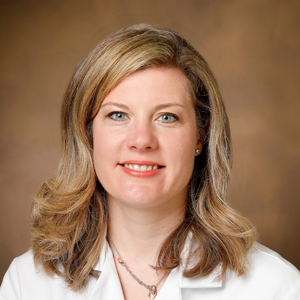Kathryn Lindley, MD, director of the Vanderbilt Women’s Heart Center, has worked with the American College of Obstetricians and Gynecologists (ACOG) and the Centers for Disease Control and Prevention to develop a national toolkit for non-obstetricians to better identify and treat pregnant and postpartum patients with cardiovascular emergencies.

The goal is to reduce pregnancy-related mortality, which has not improved in the United States in more than a decade. Such deaths can occur during pregnancy, during delivery and up to 12 months after the end of pregnancy. More than half of pregnancy-related deaths occurred seven days to one year after the end of pregnancy.
However, about two-thirds of pregnancy-related deaths nationally are preventable, said Lindley, who has extensively studied maternal mortality, including five years on the Illinois Maternal Mortality Review Committee. In Tennessee, 89% of pregnancy-related deaths have been deemed preventable, she said.
“Cardiovascular conditions are a leading cause of maternal death and morbidity,” said Lindley, who holds the Samuel S. Riven, MD, Directorship in Cardiology. “When we trace the root cause of why those patients died, we find many areas where medical teams could have intervened if they properly recognized the disease and applied the appropriate treatment.”
The ACOG campaign is two-pronged. Firstly, it aims to help non-obstetrical providers, particularly first responders and emergency department teams, better recognize and manage obstetric emergencies such as postpartum hemorrhage, elevated blood pressure and eclampsia. Secondly, it aims to educate patients about these conditions so that they may bring them up to non-obstetric providers. Lindley said the information is useful for obstetric triage as well.
It all starts with a simple question — are you pregnant or up to one year postpartum? Lindley said that non-obstetric providers may not ask if patients are postpartum. As a result, providers may not ask critical screening questions and administer the appropriate tests.
“Follow-up testing will help us to more quickly identify these life-threatening conditions and institute quick treatment,” Lindley said, “We know that when these patients have a delay of diagnosis — say they’re given the wrong diagnosis and sent home, or they sit in the ER for hours without anybody realizing what’s going on — those are the patients that have the worst outcomes.”
Working with national experts in obstetrics and emergency medicine over the last several years, Lindley helped craft the toolkit, which began rolling out at the beginning of the year. The toolkit includes algorithms and workflows that suggest specific treatments based on symptoms the pregnant or postpartum patient is presenting.
Caught early by screening tests, potentially deadly conditions can be stopped in their tracks, Lindley said.
“This initiative recognizes the partnership between obstetricians and primary care doctors, cardiologists and emergency medicine providers.” Lindley said. “It gives everybody the tools to do better, because we are all in this together to improve women’s health.”












